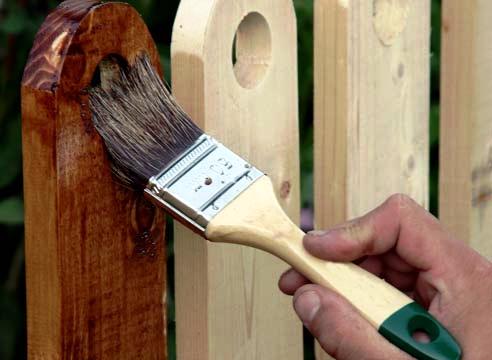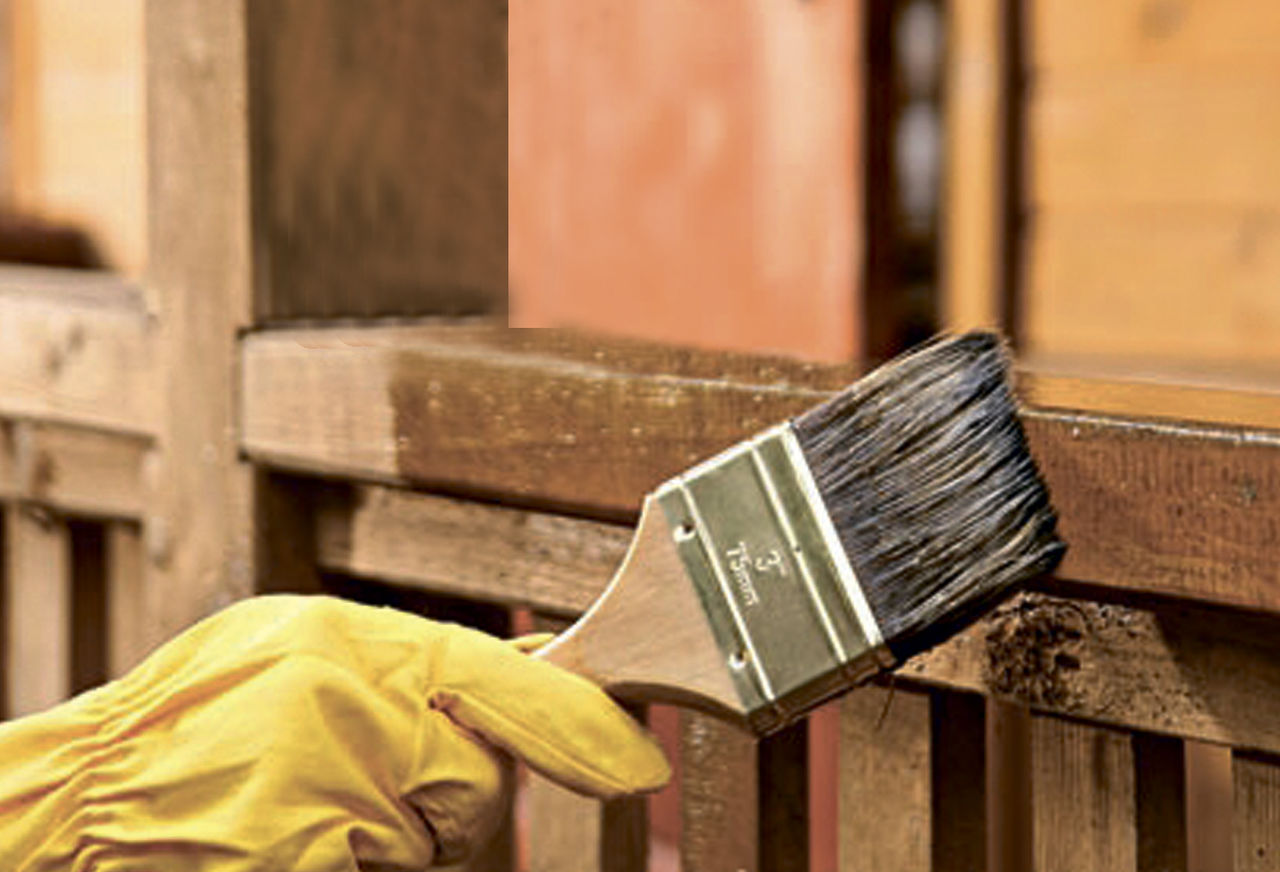Wood is an affordable, environmentally friendly building material with a beautiful appearance. Modern materials (expanded concrete, foam concrete) have recently become often used for the construction of walls and partitions, but their popularity in the construction of small houses is still losing to wood.
However, being an organic material, wood is too hygroscopic and is an excellent breeding ground for mold and microorganisms. Therefore, using this material, it is worth paying special attention to its protection from external factors.
Causes of rotting wood
The development of mold fungi is the main factor that destroys the tree. The development of mold (rotting) occurs under certain conditions:
- air humidity 80–100%;
- moisture content of the material is above 15%;
- temperature below 50 and above 0 С 0
Additional causes of rotting can be freezing of the material, stagnation of air, contact with the soil.
Factors favorable for the process of decay are quite common. Therefore, it is necessary to know how to treat wood in order to protect it from molds.
Drying wood
You should start with preventive measures. Wood must be dry to prevent mold development. There are four methods for drying timber or boards:
- Natural drying in dry rooms with good ventilation. This is the longest method (drying time - up to 1 year).
- Drying in a chamber with superheated steam, hot air. This is a more expensive, but faster and more efficient method.
- Waxing. The tree is immersed in liquid paraffin and placed in an oven for several hours.
- Steaming in linseed oil. It is used for small wooden products. The tree is immersed in oil, boiled over low heat.
Protection of wooden elements from moisture
Modern waterproofing allows you to protect the timber from capillary moisture. A high-quality roof and the application of special paints and coatings protect the structure from atmospheric moisture.
Protection against accumulation of condensate is provided by thermal and vapor barrier. The heat-insulating layer is placed closer to the outer surface, and a vapor barrier is placed between it and the wooden wall. The bar of roofing elements is protected from rain and snow with waterproofing films.
Wooden houses and structures should be located above ground level, on the foundation. For effective protection against water, it is worth taking care of the presence of a blind area, an effective drainage system. Of great importance for the bioresistance of a wooden building is the possibility of natural drying of the walls. Therefore, trees should not be planted near wooden buildings.
What to do if the timber began to rot
Rotting greatly degrades the physical parameters of the tree. Its density drops by 2–3, and its strength by 20–30 times. It is impossible to restore a rotten tree. Therefore, the element affected by rot should be replaced.

With a slight infection with mold, you can try to stop the process. To do this, the rotten area is completely removed (with the capture of part of the healthy wood). The removed part is replaced with steel reinforcing rods, which should go deep enough into the healthy part of the element. After reinforcement, the area is puttied with epoxy or acrylic putty.
This is a time-consuming and complex procedure, after which it is not always possible to achieve the former strength of the structure. The problem is easier to prevent, for which wood is processed from decay.
Protecting a tree with folk remedies
The problem of protection against rotting has been relevant since the time when wood was first used as a material. For a long time, many effective folk recipes have accumulated that have been successfully used to this day:
- Coating wooden structures with silicate glue.
- Treatment of walls and soil (up to 50 cm deep) with a solution of potassium bichromate in sulfuric acid. 5% solutions of acid and potassium dichromate are mixed 1:1.
- Treatment with vinegar and soda. The affected areas are sprinkled with soda and sprayed with vinegar from a spray bottle.
- Wood treatment with 1% copper sulphate solution.
- Impregnation with hot resin. A very effective method for processing logs, fence stakes, benches in contact with the soil.
- Use of salt with boric acid. With a mixture of 50 g of boric acid and 1 kg of salt per liter of water, the wood should be treated several times, with an interval of 2 hours.
All these methods are only suitable for healthy wood or when the tree has small lesions.
Modern methods of combating decay
There are two ways to reliably protect a tree: preservation and antiseptics.
During conservation, an agent with a long-term poisoning effect is applied to the timber or board. To do this, the wood is soaked in cold or hot baths, or the preservative penetrates into it using diffusion or autoclave impregnation. The method is applicable only in the factory.

Antiseptic involves self-impregnation of the material by applying chemicals with a spray gun or roller. The antiseptic agent must be selected in accordance with the operating conditions of the wooden structure. For example, impregnations based on water and mineral spirits are safe and inexpensive, but can be easily washed off. Therefore, for elements in contact with moisture or soil, only water-repellent antiseptics are suitable.
Classification of antiseptics
When choosing a tool to process timber, it is worth understanding the main categories and types of protective compounds. There are three categories of wood protection compounds: paints, varnishes, antiseptics.
Paints perform both protective and aesthetic functions. For interior work, it is better to choose water-soluble paints, and for exterior - based on an organic solvent.
Varnishes form a protective film on the surface without changing its appearance. For outdoor use, varnishes with fungicides are used to kill mold, prevent cracking and fading of wood.
Antiseptics do a great job when the mold has already infected the tree. There are 5 types of them:
- Water soluble. Odorless, non-toxic, dry quickly. They are made on the basis of fluorides, silicofluorides of a mixture of boric acid, borax or zinc chloride. Not recommended for surfaces that are often in contact with moisture.
- Water repellent. Differ in deeper penetration into the tree. Suitable for processing structures of baths, cellars and cellars.
- in organic solvents. Approved for indoor and outdoor use. Forms a thick film that dries up to 12 hours.
- Oil. They form a thick, durable coating that is insoluble in water. However, they should only be used with dry wood. When applied to wet wood, oil antiseptics do not prevent the reproduction of fungal spores inside the material.
- Combined. Applicable to any wood, additionally have anti-combustible properties.

How to apply a protective coating to wood
Applying antiseptics, varnishes and paints is not difficult. However, carrying out such work requires compliance with certain rules.
- Before processing, wear gloves, a protective mask and goggles.
- Clean the surface to be painted with a scraper from dirt, grease, old paint.
- Clean the board or timber with an old brush or emery.
- Wash the surface with water and detergent.
- Wait for the wood to dry completely.
- Read the instructions for how to apply the product.
- Start processing wooden structures from the ends, cuts, damaged areas.
- If it is necessary to apply several layers of coating, pause 2-3 hours between applying each layer.
What you need to know about mold protection
The protective composition should be selected based on the characteristics of the operation of the protected surface. For outdoor use, only hard-to-wash coatings are suitable. Such products will reliably protect wood for 30 years.
For wet rooms (basements, baths), special tools are needed that can withstand sudden changes in temperature.
A change in the color of the tree, the appearance of chips and cracks is a signal that the protective coating should be urgently updated. It is recommended to alternate antiseptic compositions without re-treating the tree with the same composition..